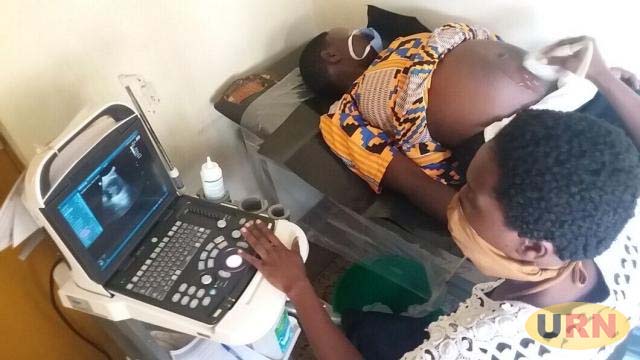
Over 65% of pregnant women using guess work to determine delivery date
✳ Only 31% Ugandan women do ultrasound scan
✳ Bukedi region only 7.8%
✳ Busoga 7.6%
✳ Uganda Maternal mortality rate 189 per 100,000
Kampala, Uganda | FLAVIA NASSAKA | Only 31% of pregnant women across Uganda are doing an ultrasound scan despite a policy by the Ministry of Health (MoH) to have mothers assessed by the 25th week of pregnancy.
According to Dr Chris Ebong, a Senior Medical Officer in the MOH, this policy that was approved in 2021 stipulates that all providers of antenatal care services from the level of Health Center IIIs should conduct a scan to determine gestational age, assess the state of fetus and be able to rule out an abnormality or any likelihood of complications at an early stage.
However, he says in areas like Bukedi only 7.8 percent of mothers get a chance to access such services and in Busoga, it is estimated at only 7.6 percent. As a result, many women get into labour without being well prepared sometimes leading to prolonged labour and its resultant complications.
“When we look at the proportion of mothers being scanned, it lies between 22 to 31 though the year. Kampala is doing well because the city has many private faciliites that can provide these services, ” Dr Ebong said.
“Also, 75% of our mothers receive care from health centres 4, 3 and 2… this is where the challenge is. Some of these facilities do not have the machine. It is ashaming to go to a Health Centre IV and not find an utrasound scanner.”
In regions like Bukedi only 7.8 percent of mothers get a chance to ultrasound scan services and in Busoga, it is estimated at only 7.6 percent. As a result, many women get into labour without being well prepared sometimes leading to prolonged labour and its resultant complications.
The majority of the women doing ultrasound scans are in the urban areas with Kampala leading in women who go for such services. Even then he says, it’s mainly done mainly by first-time mothers.
Currently, Uganda’s maternal mortality rate stands at 189 per 100,000 live births, an improvement of about 40% from 336 per 100,000 live births about six years ago.
Experts say Uganda may not achieve Sustainable Development Goal 3 for which the country committed to cut their maternal mortality rate to less than 70 per 100,000 live births by 2030 if the country still cannot do simple interventions such as a scan just four years into this target.
Dr Samuel Opio, the Deputy Chairperson of the parliamentary Health Committee says on their recent oversight visit to health facilities they found that in some government health facilities, there are no radiographers to do the scan while in some, radiographers take days without reporting to work and as a result, many mothers are discouraged from seeking the service.
Opio further says that this year, parliament approved an additional sh113 billion for the National Medical Stores-NMS to cater for critical medical supplies which could help in critical areas such as reproductive, maternal and newborn, child and adolescent health but they are getting reports that health workers are instead creating artificial shortages of such maternal health services.
Dr Nicholas Kamara, a member of the parliamentary committee says with the challenges of radiographers and equipment shortage, the government needs to adopt cheaper ways of bringing the service closer to the people. He cites a point-of-care ultrasound which midwives can use easily with simple training.
Kamara, who is a Member of Parliament Kabale Municipality reveals that he has already used this technique in a private hospital in his constituency and it proved to be working as pregnant who are scanned can be referred to higher facilities quickly once complications are detected.
Fatia Kiyange, the Executive Director Center for Health, Human Rights and Development (CEHURD) called for an extension of such services to the lowest health facilities like the Health Center III because that is where most of the deliveries are happening.
She called for more funding to go towards equipping such facilities as currently many cannot do a simple blood transfusion, yet postpartum haemorrhage is the highest killer of mothers and is run by midwives.
Kiyange says that such facilities need to be responding to emergencies and says things like point-of-care ultrasound scanning would come in handy.
****
URN
 The Independent Uganda: You get the Truth we Pay the Price
The Independent Uganda: You get the Truth we Pay the Price



